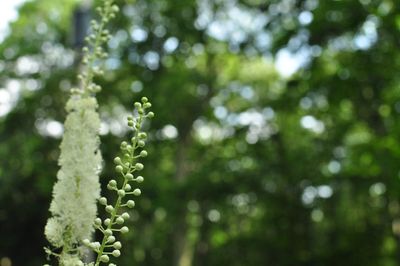What is a Sweet Almond Bush?
Sweet almond (Aloysia virgata) is a popular garden plant, especially in southern states. It can be evergreen, semi-evergreen, or deciduous depending on where you grow it. The shrub is hardy to U.S. Department of Agriculture zone 7. In cooler areas, it grows as a deciduous dwarf plant. In perpetually warm climates, it never loses its stiff, scalloped leaves, even in winter, and it can rise to 15 feet tall (4.5 m.). The long, spiked flower clusters of tiny almond-scented flowers are very fragrant. One plant can fill your garden with a strong sweet almond or vanilla-like fragrance. Flowers stay on the bush all summer long and well into fall, making sweet almonds good sources of nectar for butterflies and birds. The textured leaves are stiff and green, scalloped at the edges. The shrub’s branches have a slightly weeping habit.
Growing Sweet Almond Verbena
Growing sweet almond verbena in full sun is recommended, although the plants can tolerate partial shade. You don’t have to water much once the sweet almond is established. Sweet almond bush care requires only moderate to low irrigation, and the shrubs tolerate great heat. While sweet almond bush care does not include deadheading, it’s a good idea to trim between bloom cycles since it tends to get leggy over time.
Sweet Almond Propagation
If you have a sweet almond tree, it’s very likely you will want more. Sweet almond propagation is quite easy with softwood or greenwood cuttings – nonflowering growth from the current year. Take cuttings about as long as your hand in spring or early summer. Trim each cutting just below a node and insert the cut end into the rooting medium. Water the cuttings, then cover them with a plastic bag to retain moisture. Keep in the shade until the roots develop.
